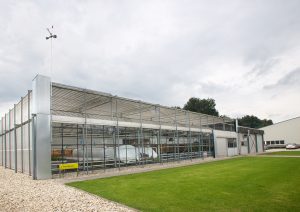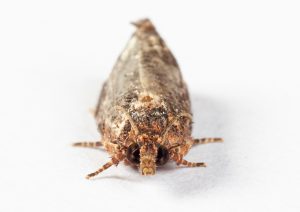
FruitFly Africa supports the fruit industry
Area-wide monitoring and control are essential to prevent fruit losses and maintain sustainable production. By Ilyaas Rhoda.
South Africa’s reputation as a leading exporter of high-quality fruit relies on effective pest management to meet strict international phytosanitary standards. FruitFly Africa plays a key role in safeguarding our export markets by using sustainable control to help producers and pack houses minimise the risk of quarantine pests.
The organisation combats key pests through year-round monitoring, aerial baiting, and sterile Mediterranean fruit-fly releases. It also provides certification to prove that growers have taken all the necessary steps to protect their produce.
Two decades of fruit-fly control
Founded in 2003 as a research initiative by the Agricultural Research Council, FruitFly Africa evolved into a non-profit organisation dedicated to suppressing destructive pests. The organisation began with the sterile insect technique for Mediterranean fruit flies, better known as Medflies.
“This involves breeding and releasing sterile male Medflies to reduce pest populations without the need for harmful chemicals,” says Ghian Du Toit, manager of FruitFly Africa.
From October to May, FruitFly Africa aerially releases around 65 million sterile male Mediterranean fruit flies weekly over about 40 000 hectares in major fruit-growing regions (EGVV, the Hex River Valley, the Langkloof, the Warm Bokkeveld, Wolseley-Tulbagh, and the Orange and Olifants River Valleys).
The sterile males mate with wild, fertile females, decreasing the number of fruit flies. With support from Hortgro and other industry stakeholders, the sterile insect technique quickly gained traction within the fruit industry.
FruitFly Africa’s operations in the Eastern, Western, and Northern Cape are anchored by satellite offices in pivotal towns. Each office is managed by an area coordinator, supported by 4–5 monitors or scouts who handle operations on the ground. The coordinators also have strong ties with regional networks, including producer groups and pack houses, which foster collaboration and seamless service delivery.
FruitFly Africa operates through a public-private partnership, funded by statutory levies on fruit producers and grants from the Department of Agriculture. “This synergy allocates resources across the services provided, benefiting the fruit industry,” says Du Toit.
Nitty gritty of monitoring
A monitoring network of more than 7 000 traps covers seven key pest species: Mediterranean fruit fly (Ceratitis capitata), Cape fruit fly (Ceratitis quilicii), Oriental fruit fly (Bactrocera dorsalis), spotted wing drosophila (Drosophila suzukii), false codling moth (Thaumatotibia leucotreta), vine mealy bug (Planococcus ficus), and polyphagous shot-hole borer (Euwallacea fornicatus).
For Medflies, FruitFly Africa deploys one trap per 20 hectares and checks traps weekly. It currently uses internationally recognised lures similar to those used in the United States, which are refreshed every six weeks. Bucket traps use a protein attractant and an insecticide, while Delta traps have a pheromone attractant and a sticky pad.
“Each trap is fitted with a barcode, scanned, and instantly linked to specific locations,” explains Du Toit. “Monitors fill out digital forms, snap photos, and submit everything on the spot.” FruitFly Africa’s monitoring app enables scouts to log data quickly.
The data flows back to the satellite offices, where area coordinators analyse trends and compile detailed reports. These insights are shared with producers, pack houses, and stakeholders to pinpoint pest hotspots.
“It’s a hands-on management tool helping growers stay ahead of infestations and protect their crops,” says Du Toit. “Clear communication and real-time updates encourage swift pest management.”
Monitoring is not without its challenges. “Keeping traps in the field can be tricky, and they occasionally go missing or get tampered with,” comments Du Toit. “When traps are lost, it creates gaps in the data, making it harder to track pest activity with precision.”
Increasing trap density would create a more sensitive network, but budget constraints make scaling up difficult. Du Toit elaborates that South African pest-control programmes operate with far less financial support than those in many other countries, where they are heavily or entirely government-funded. This means other nations often have a greater capacity for large-scale solutions.
Staying one step ahead
Like most industries, FruitFly Africa has a peak season. In summer, things get heated, and pests skyrocket, so the organisation launches a full-scale Medfly control programme and monitors orchards or vineyards.
“This targeted approach reduces fruit-fly populations to manageable levels and meets international phytosanitary standards,” says Du Toit. “Helicopters or fixed-wing aeroplanes take to the skies spraying organic baits and releasing sterile flies over orchards and vineyards.”
In winter, pests retreat to nearby home gardens and towns, biding their time until warmer weather sparks the next outbreak. “The winter programme focuses on monitoring urban hideouts, staying one step ahead,” says Du Toit.
FruitFly Africa encourages people to visit their Stellenbosch facility and observe their operations first-hand. “We are always happy to welcome visitors for a tour, providing insight into what we do and how we contribute to the fruit industry,” says Du Toit.
He is optimistic about the possibility of improving monitoring systems. “Integrating climate data could unlock new ways to predict pest patterns,” he says. He also believes artificial intelligence has the potential to revolutionise operations, making pest control more effective.
Hortgro has recently partnered with FruitFly Africa to launch a Centre of Excellence for pest monitoring. Read more about this exciting initiative on the Hortgro website.






